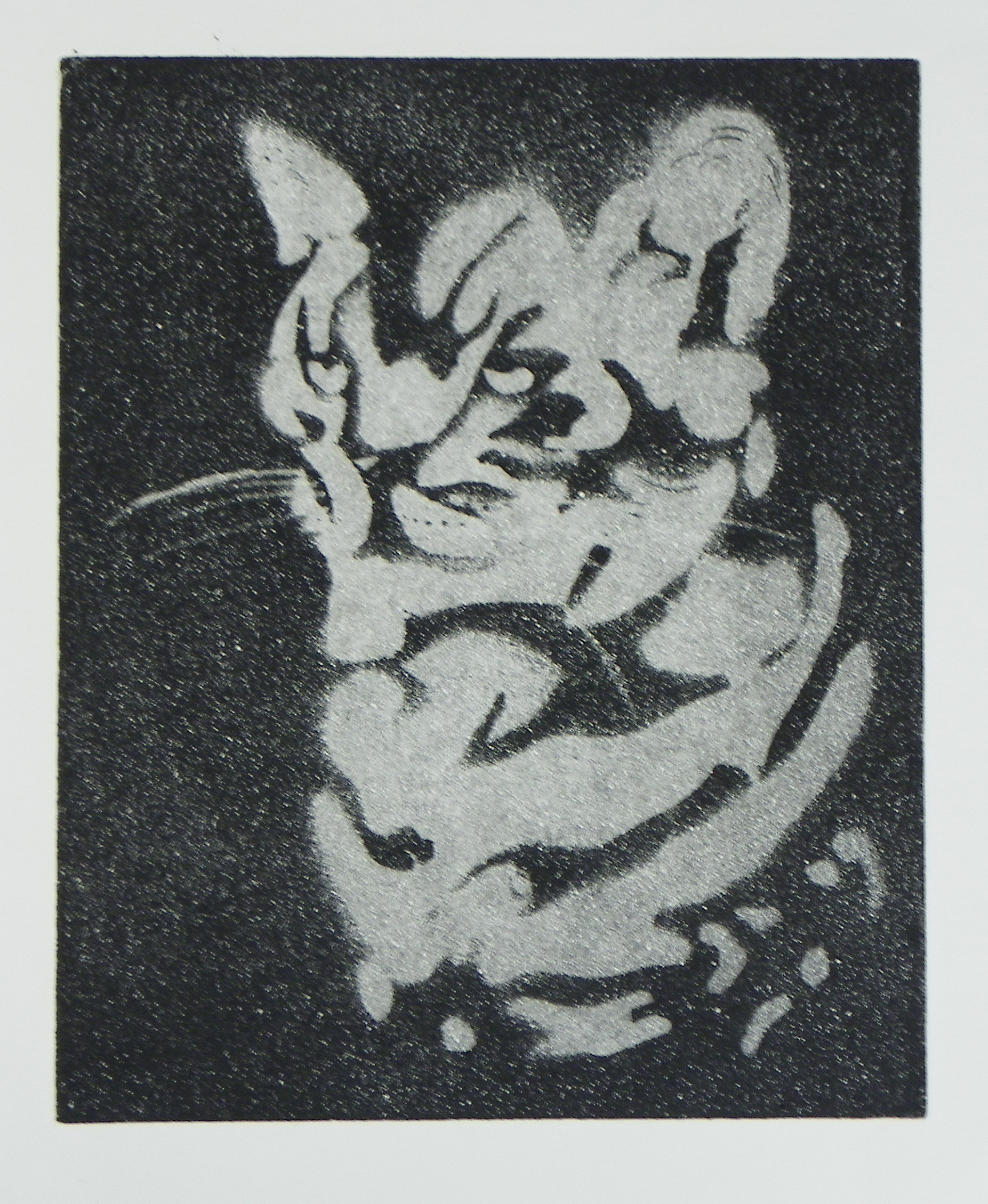Ghost Cat
An aquatint etched print

This is a aquatint etching done on a sheet of copper. I had grey and black tiger cat named Sam. She used to jump on my bed, and walk up the back of my legs and back. After she passed, sometimes when I was lying in bed, I could feel a cat walking up my legs and back, of course, when ever I looked. There was nothing there, so it was a ghost cat. This print was achieved by applying a aquatint. Which involves spraying the entire plate with a resist. I constructed an air brush booth, and lightly sprayed the entire plate, which left 1000's of tiny dots. The plate is then etched in ferric chloride. Then I created a paper templates, of a tiger cat, and put it loosely on top of the plate, then using the air brush, painted the image of the cat onto the plate. Because there was some space between the template and plate, I got a softer line. The paint stopped any etching on the parts it covered. The plate went back into the ferric chloride for the second etch. After cleaning the plate and inking it, the cat is revealed as a ghostly image.
In an aquatint etch, a resistive material material is applied to a copper plate that produces tiny dots. I prefer air brush paints, which gives me a finer control on the coverage and drop size. The paint is easily removed with citrus based paint cleaners. Once applied and dried, the plate is placed into a tank of ferric chloride. Ferric chloride, sometimes referred to as iron perchloride, is not an acid but a corrosive salt. Although it is a lot safer the the older etching methods of using nitric acid, care should still be taken to avoid contact with skin and eyes, using protective gloves and goggles.
To produce darker tones, the etching time is increased, e.g., 45 minutes, a very faint tones take a just a minute. Once the plate has been etched, the plate is removed from the ferric chloride and the etching is stopped by placing the plate, alternating, in a tray or water and then a tray of a solution of vinegar and salt. This is repeated 3 times for a total of 15 minutes. The paint is removed with citrus based cleaner. The plate is inked, and wiped, leaving just the ink in the etched plate surrounding the dots, a piece of pre-soaked and blotted paper is placed on top, and then run through an etching press. The extreme pressure of the press forces the damp paper into the etched plate, thus transferring the ink to the the paper. If you get the desired image, you can start making multiples of the print, if not, repeat the entire process.
Unlike a dry point etch that depends on the burr for darker tones, the chemically etched areas on the plate vary in depth, to hold more or less ink. There is no real limit to the number of prints that can be made. There is no degradation to the plate between prints. It's up to the artist to decide on number of prints to be made.

